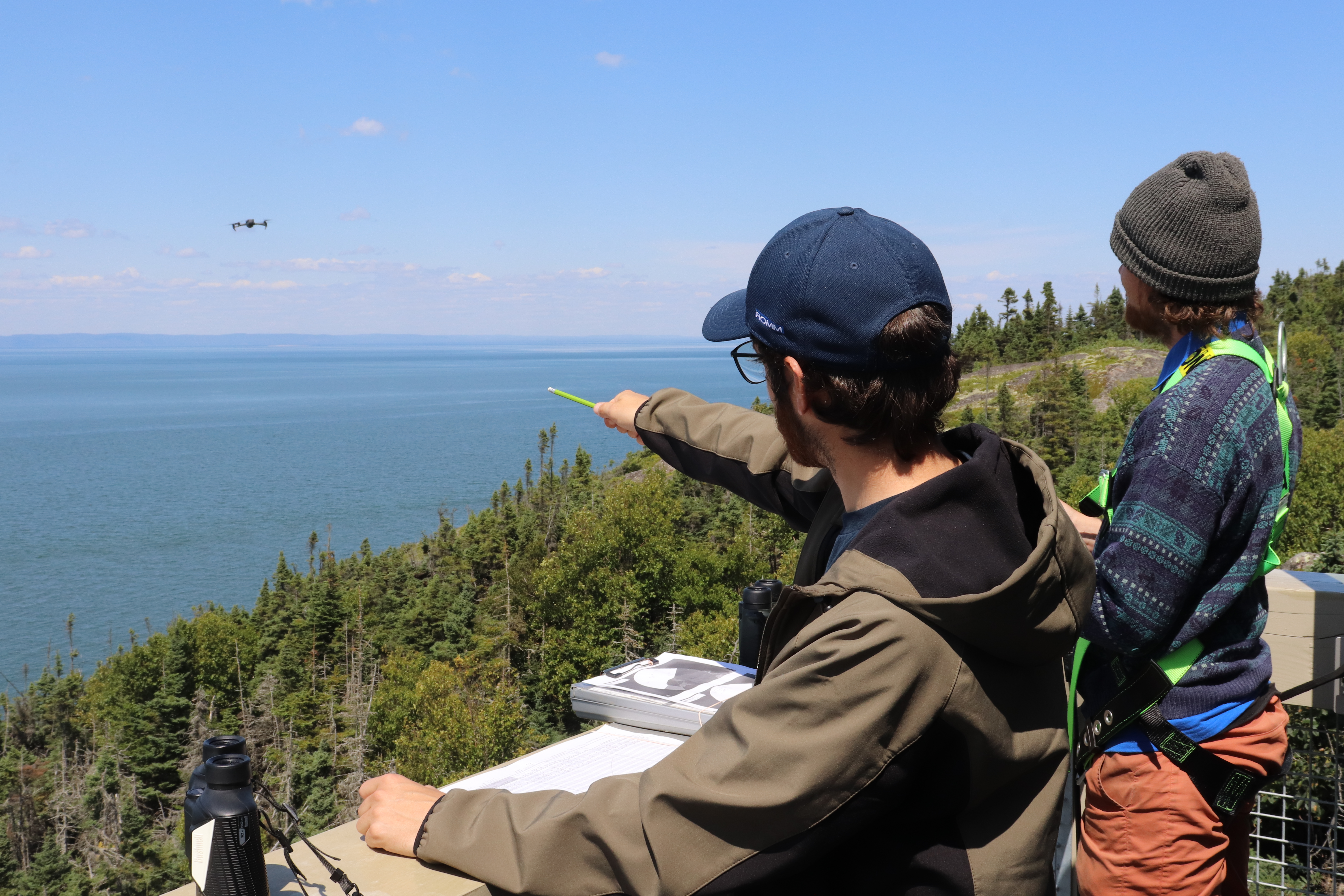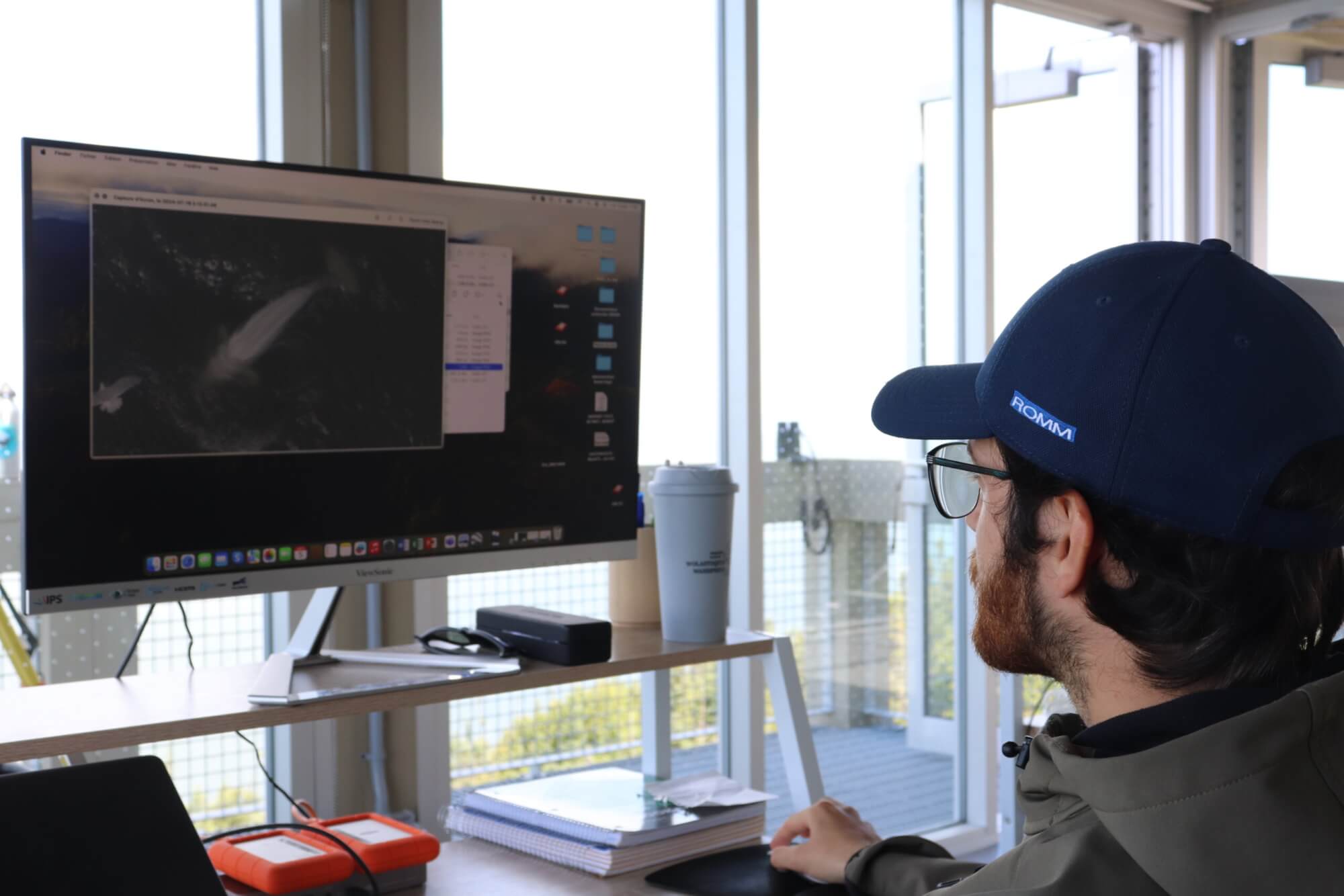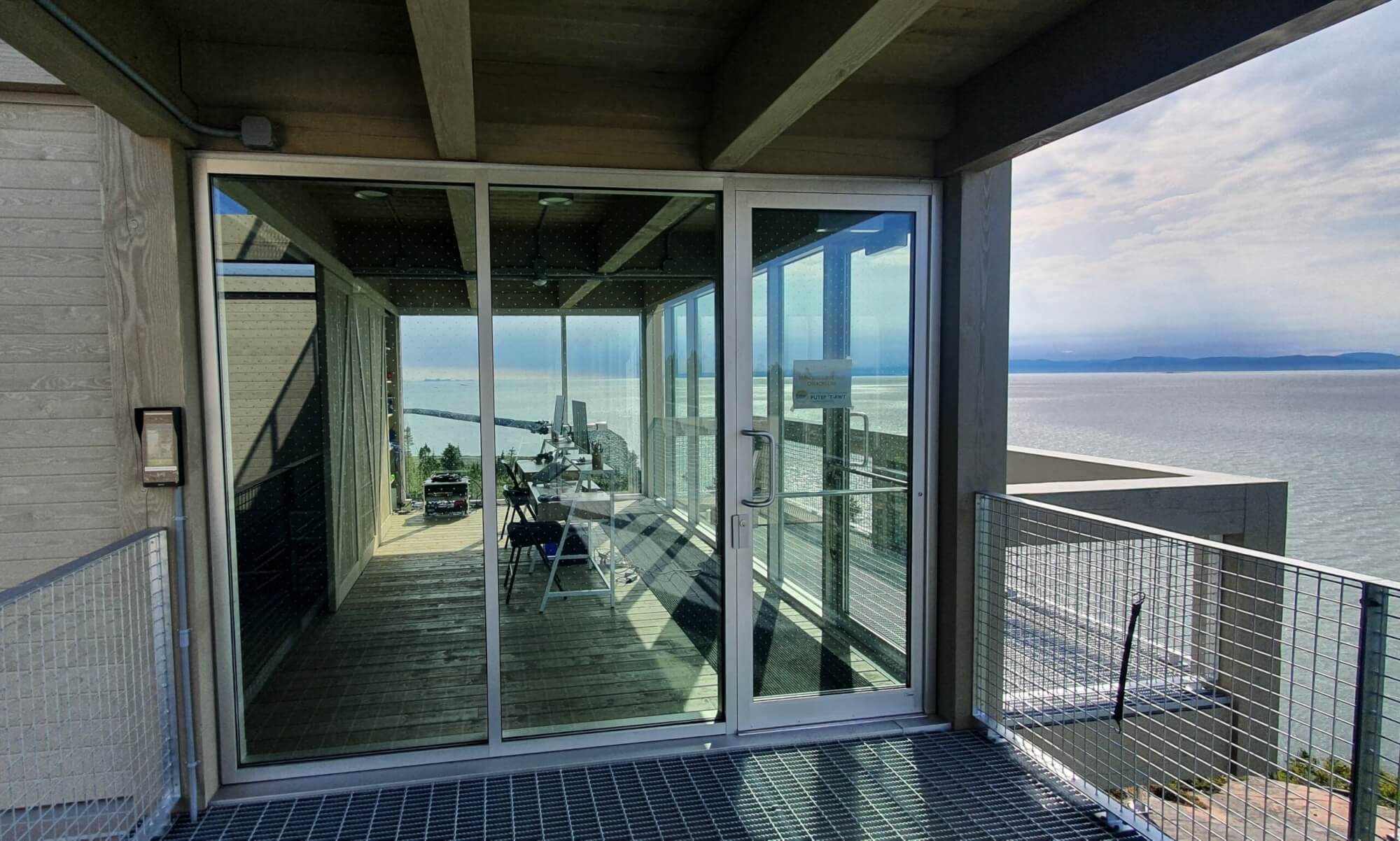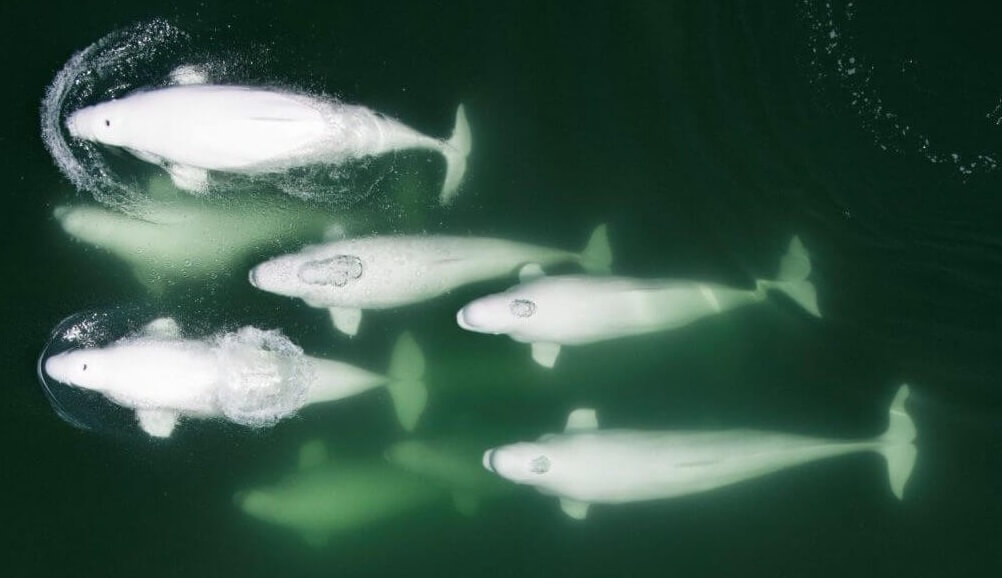Par Sami Jay Wagner-Beaulieu et Hugo Catineau, techniciens pilote de drone pour la brigade béluga rive sud
The arrival of cold weather and orange leaves means the end of our season with the belugas. Our mission is to spy on belugas using a drone in order to better understand the social structures of the St. Lawrence beluga. Amongst other things, we were able to document several fascinating scenes in the waters surrounding Gros-Cacouna Mountain. These included feeding, calves and juveniles playing, nursing and even socio-sexual behaviours.
These images, collected as part of the Window on Belugas project , were shared live with visitors to the Putep ’t-awt beluga observatory in Cacouna and also, remotely, to visitors to the Marine Mammal Interpretation Centre (CIMM) in Tadoussac.The behind-the-scenes of this observation and drone work remains no less exceptional.
Let us take you through one of our workdays on the mountain.
Arrival of the brigade
The “beluga brigade”: this is what they call us. Our workdays begin early in the morning when we arrive at the entrance to the Port of Cacouna. Once we punch in the password, the bar gate slowly rises and we are free to proceed to the small mountain known as Gros-Cacouna. This is a pretty elevation shaped by the harshness of the elements, then further moulded by the industrious hand of humans. Once the bar is up, it’s time for us to drive the bumpy road en route to our workplace.
Once we arrive at the foot of Gros-Cacouna, we take our bags out of the trunk of the car to begin the climb to Putep ’ t-awt beluga observatory. Managed by the Wolastoqiyik Wahsipekuk First Nation, this new observatory allows tourists and scientists alike to observe belugas from the mountainside. Once we arrive and get settled into the building’s research section, we take a close look at the site’s “beluga conditions.” The latter refers to the presence of belugas in the study area and the weather conditions, namely wind, rain and fog, all of which have an impact on our ability to fly drones. Finally, when these beluga conditions are good, it’s time to prepare the flight!
CacounAir on the runway
So, while the pilot is busy positioning the drone for takeoff, the co-pilot begins attentively observing the animals before filling out field sheets and flight maps. These initial data are used by the co-pilot to describe the herd, its position, its behaviour, and to propose a flight plan to the pilot. Once this is accepted, the final checks are made before launch:
- Batteries charged? Check!
- Remote control connected? Check!
- Satellite connection? Check!
- LiveU Solo turned on? Check!
- Takeoff warning sent to the naturalists of Putep ’t-awt and CIMM? Check!
- Flight recording? Check!
- Skies clear of birds of prey? Check!
Then it’s time for takeoff with CacounAir! Destination: the groups of belugas swimming in the turquoise waters at the foot of the observatory. Taking his cues from his co-pilot, the pilot then begins his search for white whales. When he finally locates them, he positions himself above them to film the individuals for as long as he can.
The recorded videos, called focal tracking, will provide a great deal of information. For example, it will be possible to more accurately age and sex the belugas observed as well as how they use the area and the behaviours they exhibit there. These same videos will also be used to detect spots, scars or deformations that can be used to identify individual belugas. In this context, they will provide a wealth of invaluable information for GREMM’s St. Lawrence Beluga Project and the conservation of these emblematic animals of the St. Lawrence.
After 25 minutes, it is already time to land and change the batteries. The co-pilot maintains contact with the herd while the pilot operates and then lands his small remote-controlled device to the cheers of onlookers. And off we go for another flight! The morning is very conducive to flying drones, and as long as there are belugas in the area and we have not exceeded the limit of flights authorized by our Fisheries and Oceans Canada research permit, we continue. Our limit is 3 flights per group of belugas at an altitude of 25 metres, which leaves us a little leeway for data collection.
End-of-flight paperwork
Once the belugas have left the study area and flights are finished for the day, it’s time to return to the office and enter our data. This means taking the day’s observations and transferring them to the database: number of individuals, their distribution in the study area, their behaviour, etc. These data provide good insight into how these animals use the territory around the Cacouna observatory. Also, the photos and videos taken during the flight are recovered and archived on our SupraDrive hard disk . The videos are then reviewed and annotated. We take advantage of the absence of the belugas for all our office activities.
However, a beluga can appear at any moment and have us running out the door in a heartbeat! Constant monitoring is therefore essential.
Departure of the brigade
As the sun slowly dips behind the Charlevoix Massif, we are reminded that our workday on Gros-Cacouna Mountain is winding down. After several hours of piloting and collecting data, we clean up the site and put our equipment away in preparation for the following days. Then we lock up the office and head down the mountain, taking stock of another great day of work that is coming to a close.
Hugo Catineau and Sami Jai Wagner-Beaulieu
Hugo and Sami form the South Shore Beluga Brigade, which was hired by MMON and holds an advanced drone permit from Transport Canada.
Together, with two other brigades deployed in Baie Sainte-Marguerite in the Saguenay and on GREMM’s research vessel Antarès, they are participating in the Window on Belugas research project.
REMINDER Flying drones over marine mammals in the Marine Park is prohibited.
Please note that it is strictly forbidden to fly drones over marine mammals in Canada and throughout the Saguenay–St. Lawrence Marine Park. GREMM holds the following permits for its research activities issued by Fisheries and Oceans Canada, Parks Canada and Sépaq: QUE-LEP-015-2024, SAGMP-2024-45891 and PNFS-2024-006, PNFS-2024-06-07.










